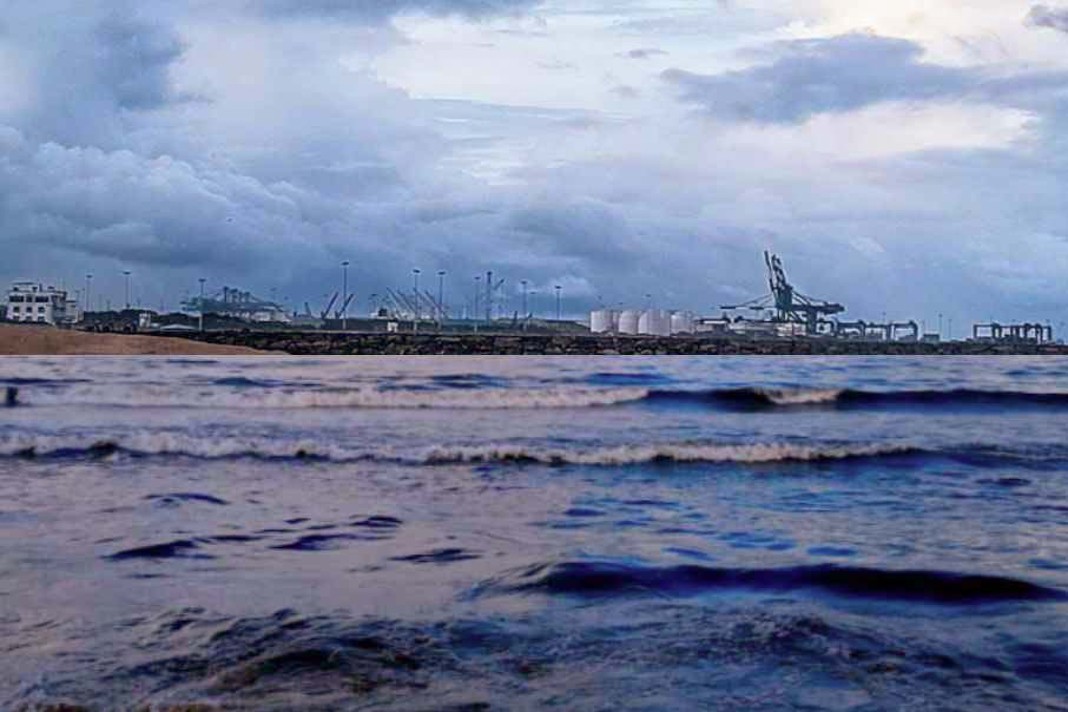Methanol fuel storage tanks onboard methanol-capable ships will not drastically impact their cargo capacity and operational efficiency, Aquamarine tells ENGINE.
Limiting factor
Several shipping companies have invested heavily in methanol-capable ships. There are already 33 methanol-capable ships in operation and another 248 ships on order for delivery towards 2028, according to classification society DNV’s database. As methanol’s popularity as a bunker fuel grows, DNV suggests that lower energy density could pose a “limiting factor” for its use on ships.
Auramarine project manager Mikko Sinivaara and product manager Valtteri Vainio, do not seem fazed by this concern.
Finland-based Auramarine produces fuel supply systems designed to enable ships to use methanol alongside conventional fuels for propulsion. Its fuel supply system is compatible with two- and four-stroke marine engines and can either be installed on new buildings or retrofitted to existing engines.
The company has “secured several orders for its methanol supply system, with increased interest from shipowners, operators, OEMs [original equipment manufacturers] and shipyards across multiple ship segments, including container ships, cruise ships, and tankers,” the spokesperson said.
Managing methanol’s lower-density
Methanol’s volumetric energy density is around 2.5 times lower than that of conventional marine fuels such as very low sulfur fuel oil (VLSFO) or marine gas oil (MGO), and 1.3 times lower than that of liquefied natural gas (LNG), DNV notes.
This also means that methanol-fuelled ships need to consume 2.5 times more fuel to cover the same distance as VLSFO- and MGO-fuelled ships, and that methanol fuel storage tanks onboard ships need to be 2.5 times bigger than VLSFO and MGO storage tanks. The same logic applies to LNG with a 1.3 multiplier.
Larger fuel tanks will require more space, potentially compromising the ship’s cargo capacity and operational efficiency. This raises the question of whether shipowners are ready to sacrifice cargo capacity for methanol fuel storage onboard.
Vainio believes this obstacle has a manageable solution. While methanol requires more storage tank space, these tanks do not all need to be in the same place – they can be spread around the ship,
Alternative storage locations
Methanol can be stored in double bottom tanks, according to Vainio. Double-bottom tanks are storage compartments located beneath a ship’s cargo holds or main deck, primarily designed for storing liquids. This kind of flexibility is not available with LNG or even conventional fuels, he explains.
Methanol does not need to be stored in special cryogenic temperatures or compressed conditions like LNG because it is liquid in ambient temperatures. This can ultimately have a greater impact on cargo space, he says.
A Methanol Institute report has noted that methanol can also be stored in existing conventional fuel storage tanks or even in ballast tanks onboard ships. Ballast tanks are compartments within ships designed to add structural support. The tanks are typically located in the lower part of ship hulls and filled with water to adjust weight distribution.
Unlike the Methanol Institute, Vainio does not think it is practical to store methanol in ballast water tanks on ships. It has not been tried yet and case studies are needed to find out whether it will work.
Methanol fits all sizes
Another report from the Methanol Institute argues that methanol’s lower energy density renders it more fit for “vessels that do not undertake very long or short journeys and tend to sail on fixed, round-trip schedules.”
Vainio agrees that ship size will not affect methanol uptake.
It can often be more feasible for container shipowners to use green methanol as a fuel since “they can increase the price of their containers, especially if it’s a green container.”
The same goes for passenger ships, Vainio adds.
Catalyst for methanol adoption
Vessels will either require new engines to run on methanol or extensive modifications to existing engines and fuel supply systems. DNV estimates that retrofitting ships to run on methanol could cost between $5-15 million.
Sinivaara suggests that marine emissions regulations like FuelEU Maritime will help ease the burden of additional investments and drive methanol uptake on ships.
Did you subscribe to our daily Newsletter?
It’s Free! Click here to Subscribe
Source: Engine















![[Watch] Crazy Power Needed to Move World’s Largest Containerships](https://mfame.guru/wp-content/uploads/2023/11/mfame-tanker-100x70.jpg)

